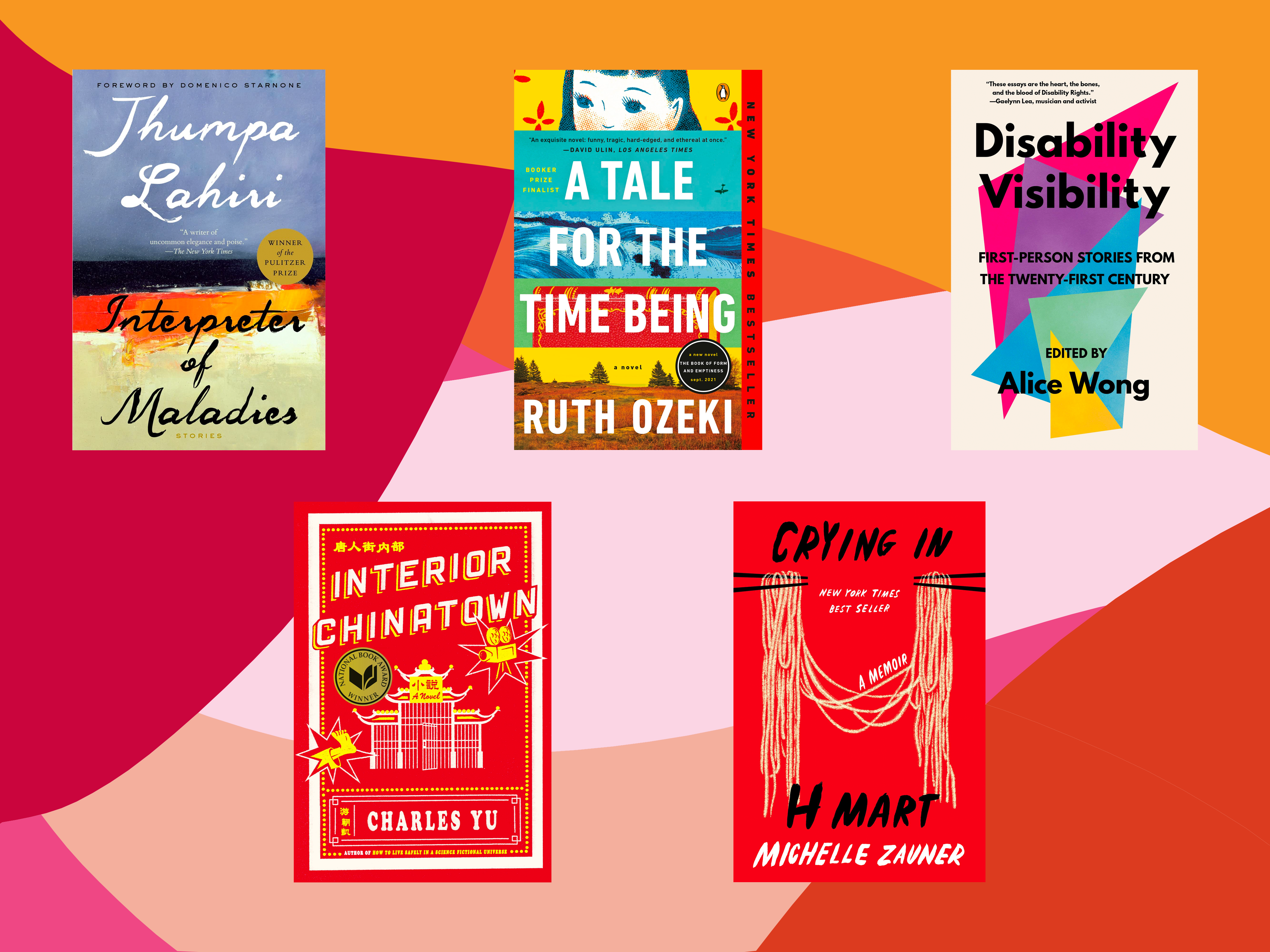May is National Asian American and Pacific Islander (AAPI) Heritage Month, during which we honor the history and culture of AAPI communities around the world. To uplift AAPI voices, The Daily asked our writers for their recommendations on books that tell AAPI stories.
“Interior Chinatown” by Charles Yu. Recommended by Kirsten Mettler ’23.
I can honestly say I have never read anything like “Interior Chinatown.” Winner of the 2020 National Book Award, the novel creatively blurs lines between fantasy and reality, all while being completely written in screenplay format. While reading it, there were times I was completely lost, but I didn’t really care. The novel was an immersive experience, less about specific plot points, and more about soaking in sentiment and feeling.
The book follows Willis Wu, a struggling actor in Hollywood, as he battles Hollywood tropes and “Generic Asian Man” casting (like “Kung Fu Guy” or “Delivery Guy”). His whole family is in the business, and they have all faced the same obstacles of typecasting and racism. The book is honest, entertaining and laugh-out-loud funny, while also being a sharp critique of institutional racism.
“A Tale for the Time Being” by Ruth Ozeki. Recommended by Lily Zhou ’22.
Shortlisted for the 2013 Man Booker Prize, “A Tale for the Time Being” is a metafictional novel that centers around Nao Yasutani, a Japanese American teenager who moves with her family from the Silicon Valley to Tokyo, where she finds herself unable to adjust to her new home. She is mercilessly bullied in school, her father struggles with depression and her family runs into financial troubles. A period of time later, Nao’s diary is swept onto the shores of an island in British Columbia, where it is discovered by a Japanese American writer named Ruth. Over time, Ruth becomes obsessed with Nao’s diary, and resolves to find and save her.
I’ve never seen an author write characters as compassionately as Ruth Ozeki does; Ozeki’s prose is unpretentious, sincere and warm-hearted. Although this novel is at times disorienting to read in its traversal through time, distance and perspective, the novel’s usage of parallel timelines, by the end of the book, proves to be emotionally cohesive. This book is, at its core, a book about loneliness and the impossible lengths we go to overcome it.
“Crying in H Mart” by Michelle Zauner. Recommended by Kyla Figueroa ’24.
“Crying in H Mart” is a memoir by alternative pop band Japanese Breakfast’s lead singer-songwriter, Michelle Zauner. At a glance, the book is about family, and, more specifically, Zauner’s mother, food, grief and endurance. Reflecting on anecdotes from various points throughout her life, from growing up as one of the few Asian Americans in her community to eating food with her mom when visiting her grandmother in Seoul, everything comes to head when Zauner, at 25, receives news that her mom is diagnosed with terminal cancer. After feeling detached from her roots due to moving away from home, she undergoes a forced reckoning of her identity and uses cooking to reclaim parts that she has lost.
The memoir removes the glitz and glam pop-stars tend to have; vulnerability gives Michelle Zauner a genuineness we don’t see on magazine covers or on stage. Moreover, while she recounts her specific experience as an Asian American woman and uplifts these voices through her spotlight, her story universally resonates. I think of what my cultural objects are — the “H Mart” in my life — and, as I read Zauner’s words, reflect on my relationship with my identity.
“Interpreter of Maladies” by Jhumpa Lahiri. Recommended by Peyton Lee ’24.
Having won literature’s two largest accolades — a Pulitzer Prize and an endorsement from Oprah — “Interpreter of Maladies” should be considered a modern classic. Personally, I believe Lahiri deserves every ounce of praise she’s received. The nine short stories that compose the collection are attached thematically and culturally but distinct in plot. The prose is effortless, concise and beautiful, catering addictiveness to voracious, one-sitting readers and digestibility to casual ones. My favorite stories are actually the first three: “A Temporary Matter,” “When Mr. Pirzada Came to Dine” and the titular “Interpreter of Maladies.”
The collection’s mastery shines brightest in its treatment of Indian culture and history. Whether describing living conditions in Kolkata or customary Indian recipes, Lahiri finds a way to show readers another world without alienating them. It is this remarkable display of cultural appreciation — balanced with a nuanced commentary on the human condition — that makes “Interpreter of Maladies” so wonderful, and an absolute must-read for anyone who appreciates life.
“Disability Visibility” by Alice Wong. Recommended by Richard Coca ’22.
In the introduction for this book, Alice Wong reflects on the lack of representation she saw in books, film, television and media as a “disabled person in an ableist society.” As Wong grew older, she discovered a community of disabled people and found stories that gave her “a sense of what is possible.” After writing and having a letter published in Time about accessible public transit as an Asian woman with spinal muscular atrophy, she began collecting other stories about disability and developed her voice.
“Disability Visibility: First-Person Stories from the Twenty-First Century” is a must-read anthology of the stories of disabled folk and activists that drives home the point that community is magical, political and critical to survival.
Editor’s Note: This article is a review and contains subjective opinions, thoughts and critiques.
